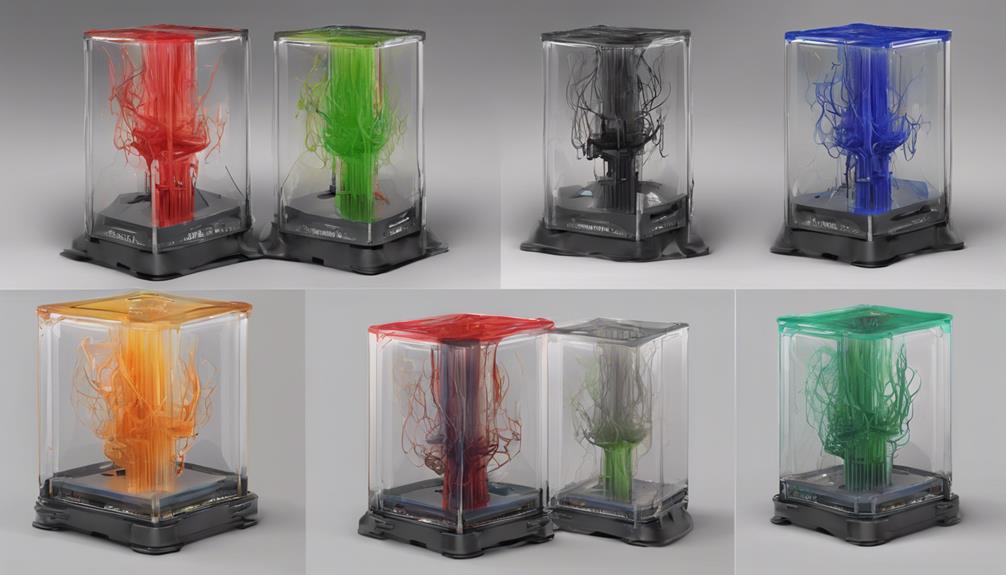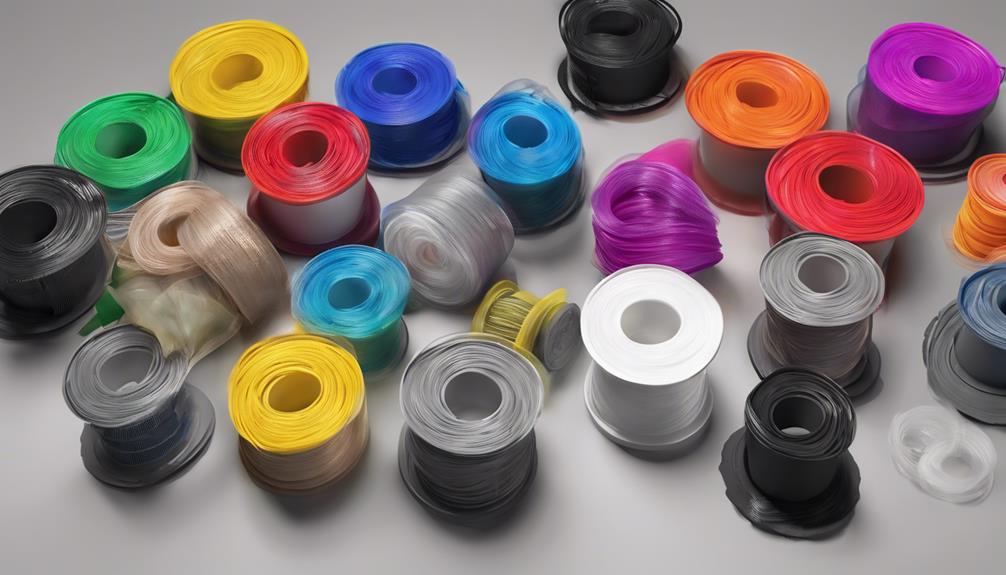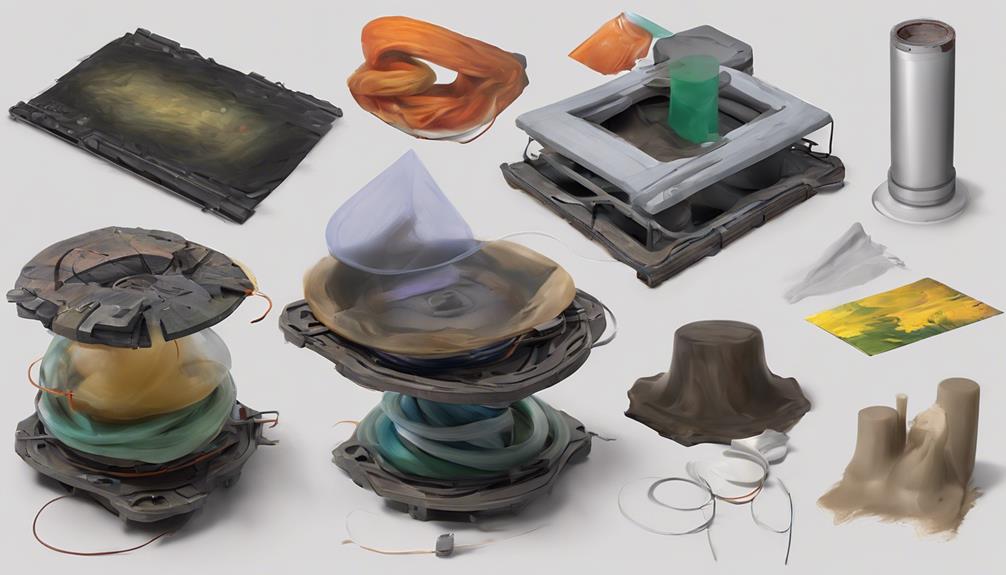When it comes to filament fusion in 3D printing, did you know that the right combination of materials can make or break the strength of your prints? Understanding the science behind adhesion between filaments is key to maximizing the full potential of your projects. By uncovering the ideal adhesion combinations, you can elevate your prints to new levels of durability and reliability. Explore the intricate world of filament fusion and discover how to achieve peak adhesion for your 3D printing endeavors.
Benefits of Filament Adhesion Combinations

When considering filament adhesion combinations, the key lies in understanding which filaments bond well together and the benefits they offer in 3D printing projects. Pairing PLA with ABS results in a strong bond, ideal for mechanical stress.
Conversely, PLA and PETG create a weaker bond, suitable for supports. ABS adheres well to PETG but may not withstand high stress. TPU bonds moderately with PETG, offering versatility. Knowing these combinations can enhance the structural integrity of your prints and guarantee successful outcomes.
Strategies for Filament Support Selection
To optimize your 3D printing projects, strategic selection of filament supports is crucial for achieving successful outcomes.
When choosing supports, consider weaker bond filaments for easy removal. Rectilinear infill can assist in support removal by providing clean breaks.
For PLA prints, use PLA supports if working with PETG or ABS due to their weak bond with PLA. ABS supports are suitable for PETG prints for the same reason. Additionally, PETG supports are ideal for ABS prints.
If you prefer supports that dissolve, consider HIPS supports, which can be removed using Limonene and bond well with PLA.
Top Product Recommendations for 3D Printing

For high-quality 3D printing results, consider these premier product recommendations carefully. Below is a table showcasing some top products that have been tried and tested for their reliability in the world of 3D printing:
| Product | Description |
|---|---|
| Creality Ender 3 | Affordable and versatile 3D printer. |
| Prusa i3 MK3 | High-quality printer favored by experts. |
| Hatchbox PLA Filament | Consistent and reliable filament. |
| E3D V6 Hotend | Precision hotend for detailed prints. |
| BuildTak Print Surface | Provides excellent adhesion. |
Insights on Overcoming Printing Challenges
Considering the premier product recommendations highlighted previously, addressing challenges in 3D printing calls for strategic insights and solutions for best results.
Here are three key insights to help you overcome common printing challenges:
- Calibrating Extruder Steps: Ensuring precise filament extrusion is essential for accurate prints.
- Optimizing Bed Adhesion: Proper bed leveling and surface preparation are vital for successful adhesion.
- Adjusting Print Speeds: Fine-tuning print speeds can help prevent issues like stringing and layer adhesion problems.
Expert Tips for Achieving Perfect Adhesion

Achieving perfect adhesion in 3D printing requires meticulous attention to filament compatibility and proper bonding techniques. Start by ensuring the bed is level and clean to create a solid foundation.
Adjust the printing temperature according to the filament type for best adhesion. Utilize a reliable adhesive like glue stick or specialized bed adhesives for improved bonding. Experiment with different bed temperatures to find the ideal setting for your filament.
Consider using a brim or raft for added adhesion support, especially for larger prints. Regularly clean your print bed to remove any residue that may hinder adhesion.
Frequently Asked Questions
Can I Mix Different Filaments for Multi-Material Prints?
Yes, you can mix different filaments for multi-material prints. Verify compatibility for successful adhesion. Experiment cautiously, adjust settings accordingly, and test for desired outcomes. Enjoy the creative possibilities of combining filaments for unique 3D prints.
What Is the Best Way to Remove Supports for Strong Bond Filaments?
When removing supports from strong bond filaments, consider using tools like pliers or tweezers for precision. Start by gently breaking away excess material, then carefully detach the supports to avoid damaging the print.
Are There Any Specific Printers Recommended for Flexible Filament Printing?
When printing flexible filaments, consider the Ender 3 or Prusa i3 for dependable results. They handle TPU well. Adjust settings for best prints. Achieve strong adhesion and smooth finishes with these recommended printers.
How Can I Prevent Warping When Using High-Strength Adhesion Combinations?
To prevent warping with high-strength adhesion combos, guarantee proper bed leveling and adhesion aids like glue sticks or bed adhesives. Adjust nozzle and bed temperatures for best bonding. Monitor prints for warping during the initial layers.
Is There a Method to Improve Adhesion Between TPU and PETG Filaments?
Boost your TPU and PETG bond by preheating your build plate to 60°C, applying a thin layer of glue stick, and slowing down your first layer speed. This method enhances adhesion, ensuring your prints stick together flawlessly.
Conclusion
Now that you know the secrets to perfect filament fusion, go forth and create your highest-quality prints yet!
Remember, the right combination can make all the difference in achieving excellent results.
So don't be afraid to experiment and find your perfect match.
Happy printing, and may your adhesion always be as strong as a bull in a china shop!